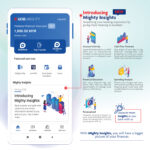According to a chart provided by Statista, based upon figures from Counterpoint Research, LG Electronics ranked ninth amongst the top 10 smartphone vendors in 2020 by estimated worldwide market share based upon units shipped, with LG phones accounting for 1.9% market share, ahead of Tecno (1.7%) and behind Lenovo (2.5%). The top three in 2020 were Samsung (19.2%), Apple (15.1%) and Huawei (14.1).

Turning to LG Electronics’ press release of 5 April 2021 which announced that it would be closing its mobile business worldwide by 31 July, the company wrote:-
“LG’s strategic decision to exit the incredibly competitive mobile phone sector will enable the company to focus resources in growth areas such as electric vehicle components, connected devices, smart homes, robotics, artificial intelligence and business-to-business solutions, as well as platforms and services.”
“Moving forward, LG will continue to leverage its mobile expertise and develop mobility-related technologies such as 6G to help further strengthen competitiveness in other business areas. Core technologies developed during the two decades of LG’s mobile business operations will also be retained and applied to existing and future products.”
This is not unusual, as many other cellular communications multinationals such as Ericsson, Motorola Mobility, Alcatel and some others have either sold off their respective mobile phone division or licensed their respective technologies and brandnames to other phone makers, especially in Asia who also do the sales and marketing within a more hyper-competitive smartphone market with wafer thin profit margins, whilst “older boys” focus on more lucrative communication network equipment and emerging technologies, equipment, platforms and solutions.
Likewise, computer maker IBM had sold off its personal computer division to Lenovo, whilst it focusses on more lucrative, mostly enterprise-oriented technologies, equipment, platforms and solutions.
Memories
At the same time, LG Electronics’ announcement bought back memories of numerous consumer tech articles and advertisements of the dark coloured LG Chocolate (KG800) candybar GSM 2G feature phone painted on the sides of LRT coaches back in mid-2006 and LG had announced the KG800 in March that year, according to GSM Arena and had launched it internationally in May that same year according to Wikipedia.
Celcom was first to launch 3G service in Malaysia in May 2005, followed by Maxis in July that same year, though public adoption of 3G was still rather slow even a year later. Back then it seemed that 3G was a technology looking for an application, leading to some to predict that 3G would be superseded by competing bearer technologies such as WiMAX and iBurst at the time. However, 3G eventually caught on in Malaysia and the rest is history.
Now discontinued, the KG800 measured 95 x 48 x 15.2 mm, weighed 83gm, had a 31 x 39mm, 256K colours TFT display of 176 x 220 pixels resolution, a 1.3 pixels main camera (no selfie camera), LED flash and took QCIF videos, Bluetooth 1.2, SMS, EMS and MMS messaging, e-mail and a WAP2.0/xHTML browser – all par for the course back then.
And no, it did not come with Android which was unveiled almost one and a half years later in November 2007, with the first commercial Android phone, the HTC Dream announced on 23 September 2008, though LG did follow later with its Android smartphones.
Back then, different brands of mobile phones ran their own proprietary device software or their own implementations Java or Symbian, which gave phones of each brand a different look and fell – or might we say character, which made them unique and interesting, especially for me who reviewed many different phones of different brands for Mobile World Magazine at the time.
However, after they entered the market, I was tasked to reviewed different brands of Android phones and after about a year, it became rather boring and difficult to identify and highlight the differences between them in the review, apart from the physical aspects of their hardware, and additional applications and software features added by their respective manufacturers to differentiate them from the competition.
Just as with Microsoft Windows which powers almost every branded or non-branded PC, the adoption of the Android device OS for almost every brand of smartphone, besides iPhones and iPads has commoditised and more or less standardised the character and predictability of look and feel of different brands of phones, which may have made them more affordable for consumers but at the same time has made smartphones less lucrative for the earlier market players, which like LG Electronics have decided to leave mobile phones to others to handle, whilst they focus up the value chain.
No more 3G
Talking of 3G, I’m pretty old school and still use a 3.5 G Nokia Asha 302 phone with QWERTY keyboard for my voice calls and SMS, and a 4G LTE Huawei Y9 Prime 2019 Android smartphone for WhatsApp, MySejahtera, as a camera and other apps.
With all mobile network operators in Malaysia mandated to turn off their 3G networks by the end of 2021 to be replaced by an expanded 4G LTE network coverage nationwide, according to the government’s Jendela National Digital Network initiative; I’m on the lookout for a 4G LTE candybar phone with Voice over LTE (VoLTE) capability and a physical keypad before the end of the year.
With 3G, data is packet-switched, whilst voice is circuit switched, and 4G phones without VoLTE capability use the 4G network for data but fall back on the 3G network for voice, so no VoLTE, no voice calls. Having looked around online, perhaps I’ll settle for a Nokia 8000 4G.








